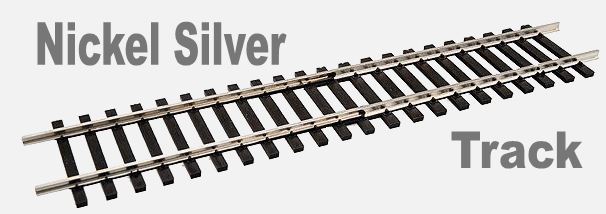Everything on model trains, model railroads, model railways, locomotives, model train layouts, scenery, wiring, DCC and more. Enjoy the world's best hobby... model railroading!
Advantages of Using Nickel-Silver Tracks
Supplied by club member Warren:
Nickel – Silver is a composition of copper and nickel, with copper being the dominant metal. It is similar to brass but has added advantages. When brass oxidizes, a layer called rust is formed. Rust does not allow electrical conductivity. Consequently, if brass tracks are used, trains may not run smoothly. Regular cleaning and removing of rust is essential.
Nickel-Silver tracks also oxidize after a time. The difference is that nickel silver track has a higher current flow resistance than does brass track. This can necessitate more wiring to adequately feed the track.
Add your comment.
















I agree with you 100%
Thanks for the info and update…
Both have to be cleaned now and then, and the nickel-silver requires more wiring!
Also, Ni-Silver rails have steel like realistic shine on top surface but brass rails have undesirable yellow-golden.
The oxide on nickel silver is conductive, therefore the rails do not need scrubbing with a track rubber, a wipe with cloth or tissue is adequate.
I always use nickel-silver track and all my rolling stock is equipped with metal replacement wheels and this means less track and wheel cleaning. DCC also makes a difference as the grime does not build up so quick due to the ac current. when the track does need cleaning a quick wipe with a cloth pad and spot of methylated spirits is all that is needed.
Steel rails rust. Brass does not rust, but it does tarnish. Oxidation in both cases.